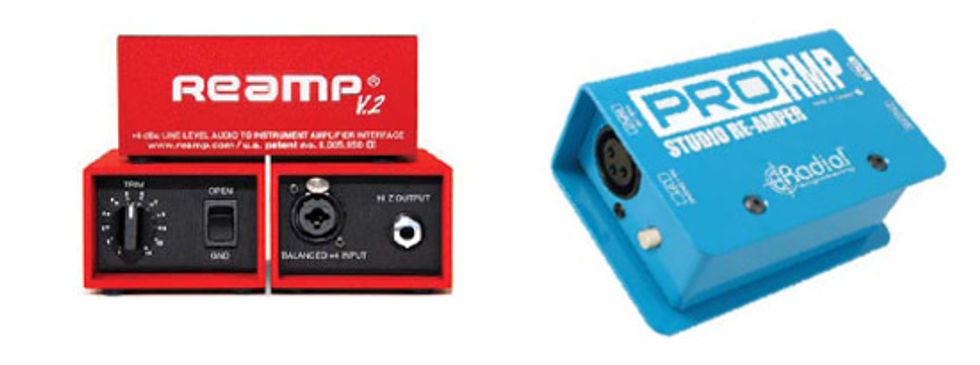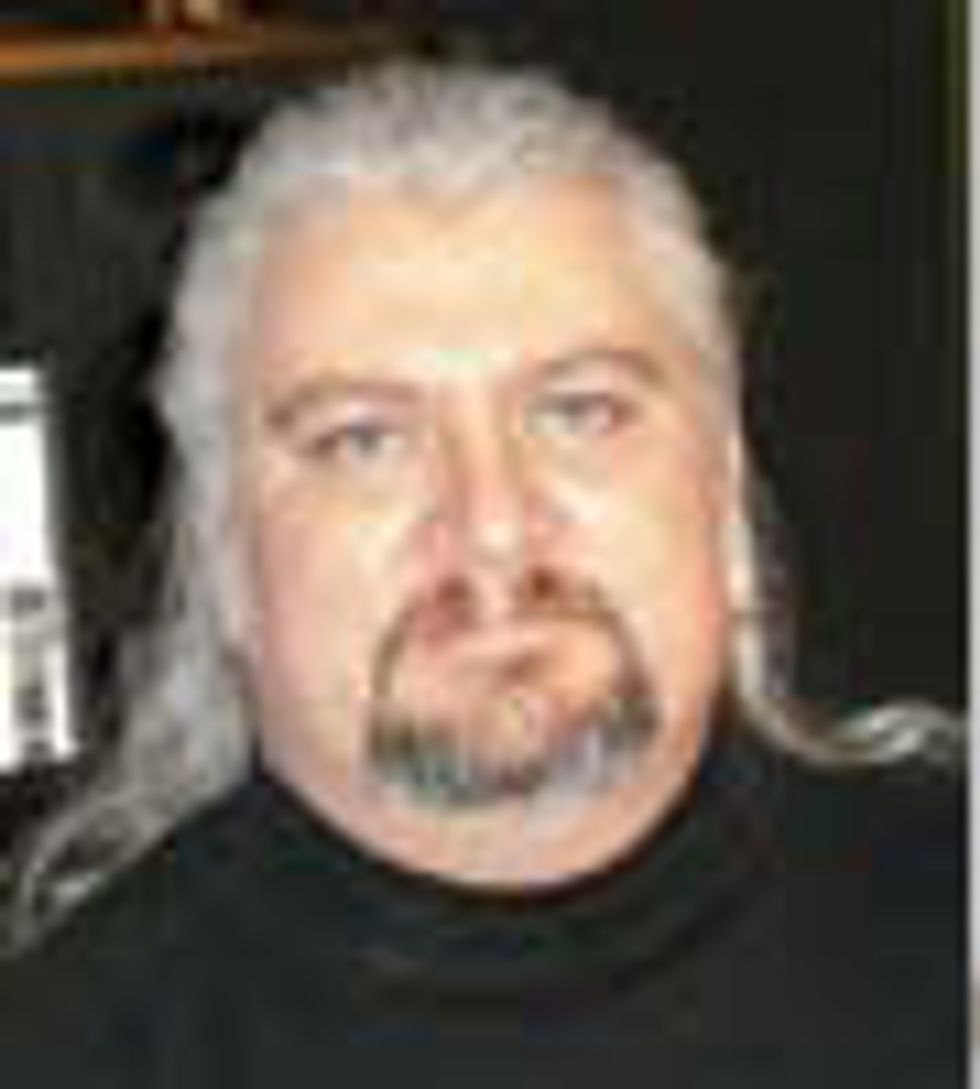
Looking to take those “happy accidents” one step further? Break out your reamp box! Here’s how it works: You record a dry guitar track with a direct box—without the amp, without effects—capturing only the clean, natural guitar sound. Then you use a reamping box to send the guitar signal out of your DAW (or recorder) into your amplifier. Mic up the amp and record that signal to a new track. This technique allows you to dial in exactly the tone you want after the fact, when you have more time, more control, and more sonic context (that is, more tracks recorded). Shown here are John Cuniberti’s pioneering Reamp device (left) and the ProRMP reamping box from Radial Engineering.
The title for this month’s column is inspired by several recent recording sessions, in which what seemed like mistakes—or at least useless things—ended up being really cool.
In the first case, I was making a live performance recording of an improv jazz ensemble, consisting of a guitarist, bassist, drummer, and vibes player. The bassist was using an acoustic upright with a pickup going into a small combo amp. For the recording, we had a mic on his bass and also used a DI to feed the pickup signal into the Pro Tools system. Before the performance even started, the bassist moved his bass away from the mic, and we had to get all of his sound from the DI. At first, it seemed we had wasted our time getting a good mic’d acoustic sound because the mic ended up pointing into empty space. Just for kicks, we listened to that mic track when the recording was done, and found that it had captured a pretty cool sound from the drum kit. With a little EQ and some compression, it added nice dimension and depth to the drum sound when blended in with the close mics on the kit.
Case number two occurred while recording a big band with saxes, trombones, trumpets, guitar, bass, drums, and piano. There were lots of mics on the stage—on individual instruments, some overhead, and some out front to capture the full ensemble sound in the room. During setup, someone put an extra mic by the saxes, ran a cable for it, and it was recorded to a track—though it wasn’t on a particular instrument or placed properly for any sort of ensemble capture. We decided to give it a listen anyway and found it was picking up some sort of washy sound, but also had a ton of solid low end. After a little judicious EQ, this track turned out to be a useful addition to the overall mix.
The last example took place when mic’ing up a combo guitar amp, using some of the multi-mic methods we discussed in last month’s column [“The Secrets of Multi-Mic’ing,” June 2011]. I had one close mic that just wasn’t getting a very good sound. To clean up the studio a bit, I moved the mic away from the amp and set it off to the side. It was pointed away from the amp and toward the rear of the room, but the signal from that mic was unknowingly recorded to a track. Once again, before deleting it, I gave it a listen and found it had captured a nice room tone.
I call these sorts of things “happy accidents,” and they can also happen outside the realm of microphones. On occasion, I’ve accidentally run a guitar track through processing I had setup for a drum or vocal track, but ended up with a great tone. I’ve also accidentally selected a preset on a plug-in that was intended for an entirely different application, but had the results turn out great.
Sometimes the result is a totally whacked out sound that ends up working perfectly for a particular situation. In other cases, you may get a beautiful ambience, or a nice sound that can double your dry guitar track. Sometimes you’ll end up heavily EQing the “accidental” sound just to bring out a particular aspect that reinforces the dry track. As an example, it may be cutting all the highs on a signal and then using the results to enhance the low end in a mix.
As much as we try to control everything in a recording session, the point is there’s always the possibility for something unexpected to happen. Those oddball, random things that occur can occasionally work out brilliantly. So, why not run with them? I encourage it! If you’re getting a great room sound with a mic that’s pointing the “wrong” way, take note of where the mic is placed (so you can put it back if need be) and try to fine-tune its position for an even better sound. Before you delete a track, give it a listen and see if you can use it in a supporting role or turn it into an entirely new element in your mix. Accidentally step on the wrong pedal or choose the wrong plug-in? Give the sound a chance. Maybe it will lead you in directions you never thought you would go.
With most of us using computer-based recording technologies, the cool thing is that there’s very little reason to throw anything away. If you accidentally capture a track from a mic that was set up in the middle of nowhere, who cares? It’s only a few megabytes, and with the huge hard drives most of us have in our computers, it’s not going to make much of a difference whether you delete it or not.
So keep your eye out for those happy accidents, or even “arrange” for a few accidents to occur. Who knows what you may get, where it might lead, or what inspiration it might provide?
 Mitch Gallagher the former Editor in Chief of
EQ magazine and the author
of six books on recording
and one instructional DVD
on mastering. He operates
MAG Media Productions
and the Sound Sauna studio, and is
Sweetwater’s Editorial Director. His upcoming
book is Guitar Tone: Pursuing the Ultimate
Electric Guitar Sound. mitchgallagher.com
Mitch Gallagher the former Editor in Chief of
EQ magazine and the author
of six books on recording
and one instructional DVD
on mastering. He operates
MAG Media Productions
and the Sound Sauna studio, and is
Sweetwater’s Editorial Director. His upcoming
book is Guitar Tone: Pursuing the Ultimate
Electric Guitar Sound. mitchgallagher.com









![Rig Rundown: Russian Circles’ Mike Sullivan [2025]](https://www.premierguitar.com/media-library/youtube.jpg?id=62303631&width=1245&height=700&quality=70&coordinates=0%2C0%2C0%2C0)
















